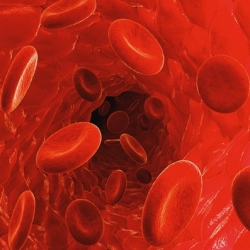
"Finding a distinctive methylation-based signature is like looking for a spruce tree in a pine forest," said Dr. Laura Elnitski, at NIH’s National Human Genome Research Institute (NHGRI). "It’s a challenge to identify, but we found an elevated methylation signature around the gene ZNF154 that is unique to tumors."
Dr. Elnitski is head of the Genomic Functional Analysis Section and senior investigator in the Translational and Functional Genomics Branch at NHGRI. In 2013, her research group discovered a methylation mark (or signature) around ZNF154 in 15 tumor types in 13 different organs and deemed it a possible universal cancer biomarker. Biomarkers are biological molecules that indicate the presence of disease. Dr. Elnitski’s group identified the methylation mark using DNA taken from solid tumors.
"No one in my group slept the night after that discovery," Dr. Elnitski said. "We were so excited when we found this candidate biomarker. It’s the first of its kind to apply to so many types of cancer."
In this new study, they developed a series of steps that uncovered telltale methylation marks in colon, lung, breast, stomach and endometrial cancers. They showed that all the tumor types and subtypes consistently produced the same methylation mark around ZNF154.
"Finding the methylation signature was an incredibly arduous and valuable process," said NHGRI Scientific Director Dan Kastner, M.D., Ph.D. "These findings could be an important step in developing a test to identify early cancers through a blood test."
The NIH Intramural Sequencing Center sequenced the tumor DNA that had been amplified using a technique called polymerase chain reaction (PCR). Dr. Elnitski and her group then analyzed the results, finding elevated levels of methylation at ZNF154 across the different tumor types.
To verify the connection between increased methylation and cancer, Dr. Elnitski’s group developed a computer program that looked at the methylation marks in the DNA of people with and without cancer. By feeding this information into the program, they were able to predict a threshold for detecting tumor DNA.
Even when they reduced the amount of methylated molecules by 99 percent, the computer could still detect the cancer-related methylation marks in the mixture. Knowing that tumors often shed DNA into the bloodstream, they calculated the proportions of circulating tumor DNA that could be found in the blood.
Dr. Elnitski will next begin screening blood samples from patients with bladder, breast, colon, pancreatic and prostate cancers to determine the accuracy of detection at low levels of circulating DNA. Tumor DNA in a person with cancer typically comprises between 1 and 10 percent of all DNA circulating in the bloodstream.
The group noted that when 10 percent of the circulating DNA contains the tumor signature, their detection rate is quite good. Because the methylation could be detected at such low levels, it should be adequate to detect advanced cancer as well as some intermediate and early tumors, depending on the type.
